Soundtoys has made their exceptional phaser plug-in PhaseMistress free for a limited time. Here’s how to get it, plus some CDM-exclusive presets and a crash-course tour.
PhaseMistress, like many of Soundtoys’ other hits, models a bunch of different hardware phasers in a single, deceptively simple plug-in. It’s normally US$99 (or part of their bundles), but it’s free through November 15; just sign up for email, and you get an activation code:
Get a FREE PhaseMistress plug-in
Okay, so now you’ve got it – what can you do with it? Let’s take a look.
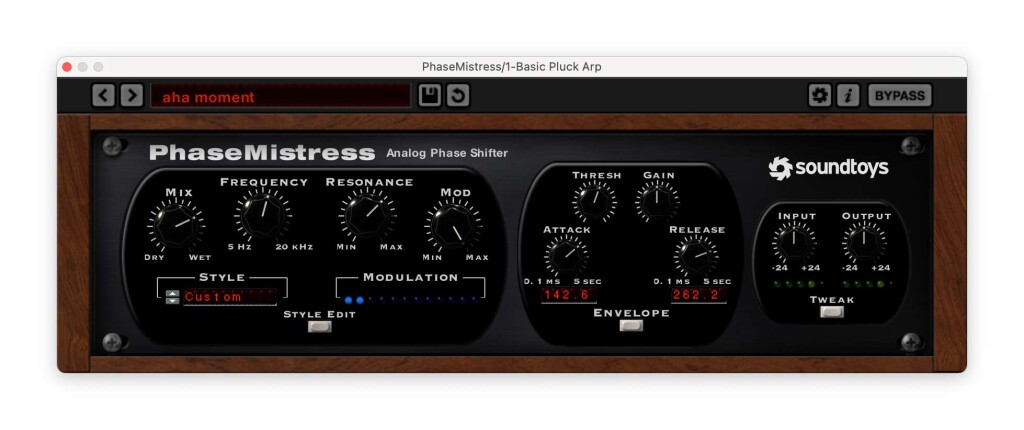
PhaseMistress tour
Phasers are so-called because they mix a phase-shifted sound together with the original, producing phase cancellation “notches” in the sound. Add modulation to sweep the modulation up and down, and you get the swirling phaser sound you know and – maybe – love.
Now, you might not always love phasers, especially if you’re accustomed to a small range of flavors available in hardware or plug-ins. Phase Mistress’ advantage is its flexibility: a simple control swap or tweak can make it sound like a number of classic hardware models, or you can bend it into other ranges.
It’s really a bunch of phasers in one – much like SuperPlate did for plate reverbs or EchoBoy for delays. The Shin-Ei Uni-Vibe, the MXR Phase 90, Maestro PS-1A, Electro-Harmonix Small-Stone, Eventide Instant Phaser, and Mutron Bi-Phase are all in there, for instance, but also any number of models you imagine yourself, starting with a full choice of 2-24 stages, including odd numbers. For some history – love the JHS channel (even as a keyboardist myself):
That makes this a must-have in your arsenal in my book. There are videos below, but let’s take a speed run through what’s there so you can get playing fast:
The main panel is pretty self-explanatory – mix, gain, frequency, resonance, mod, rate, and input and output. Just note that as on other Soundtoys plug-ins, you can drive input and output harder for added distortion and saturation. (At 12 o’ clock, they’re at roughly unity gain.) This will color the sound based on the modeled hardware, configured via Tweak > Analog Style, pre- and post-fader.
You’ll also typically adjust Frequency based on the input content. You can set a pretty standard phaser by setting the frequency and mod to their defaults, but you can also go very extreme or very subtle. I think subtle phasing is often overlooked as an effect.
Then you get into tweaks:
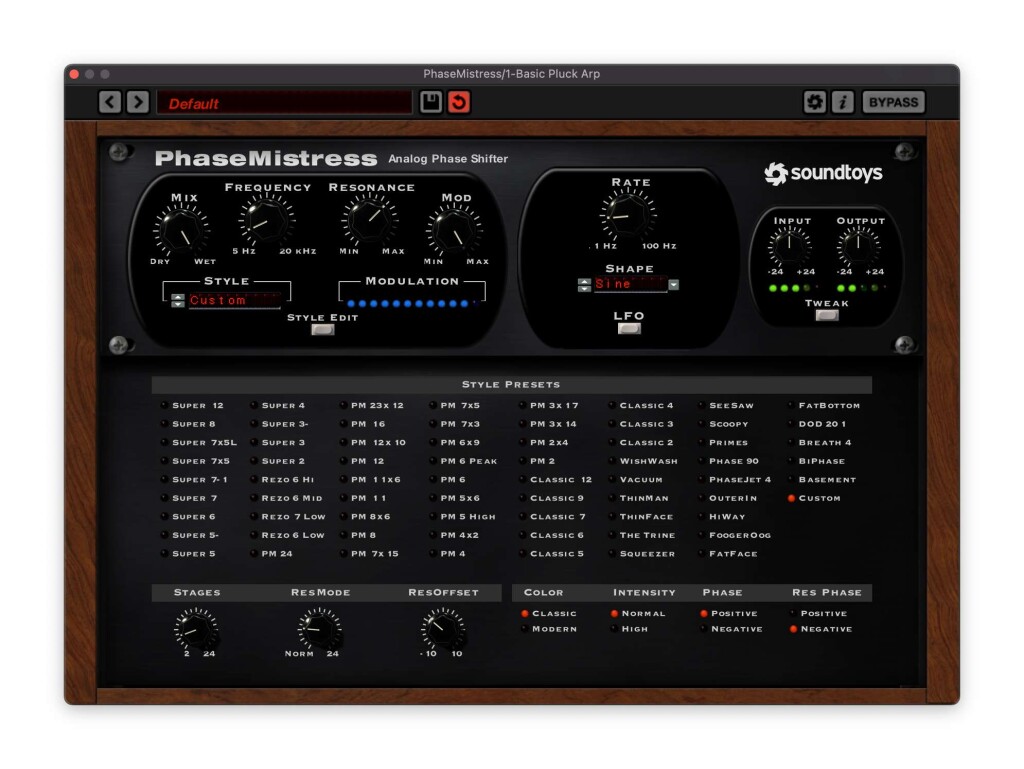
Style brings up a whole mess of hardware – historical and otherwise – that you can pull up. These will sound radically different, which is why this plug-in does the work of many other plug-ins combined. And you can adjust further by changing the number of stages, resonance settings, color, intensity, phase, and resonant phase via Style Edit.
Just as Soundtoys gave us advice for auditioning settings with SuperPlate so as not to get overwhelmed, here, too, it’s a good idea to set Mix half or fully wet, frequency at 12 o’clock, resonance at 9 o’clock, and depth at 12 o’clock. (Or if you have something else in mind, set that and leave it while you adjust style.)
Modulation can also be set to LFO, rhythm, envelope, random, step, or ADSR. The LFO has its own tweak controls and its own custom shape, so you’ll generally want to set LFO and then try tweaking for more advanced modulation options.
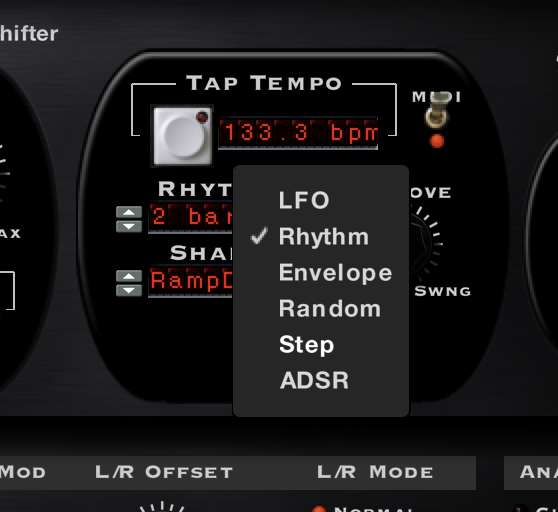
You can also watch the Modulation LEDs for an indication of what’s happening. (That’s not as fancy as some other plug-ins I’ve looked at lately, but it still works well enough.)
You can even save and recall custom shapes, and there are custom smoothing modes.
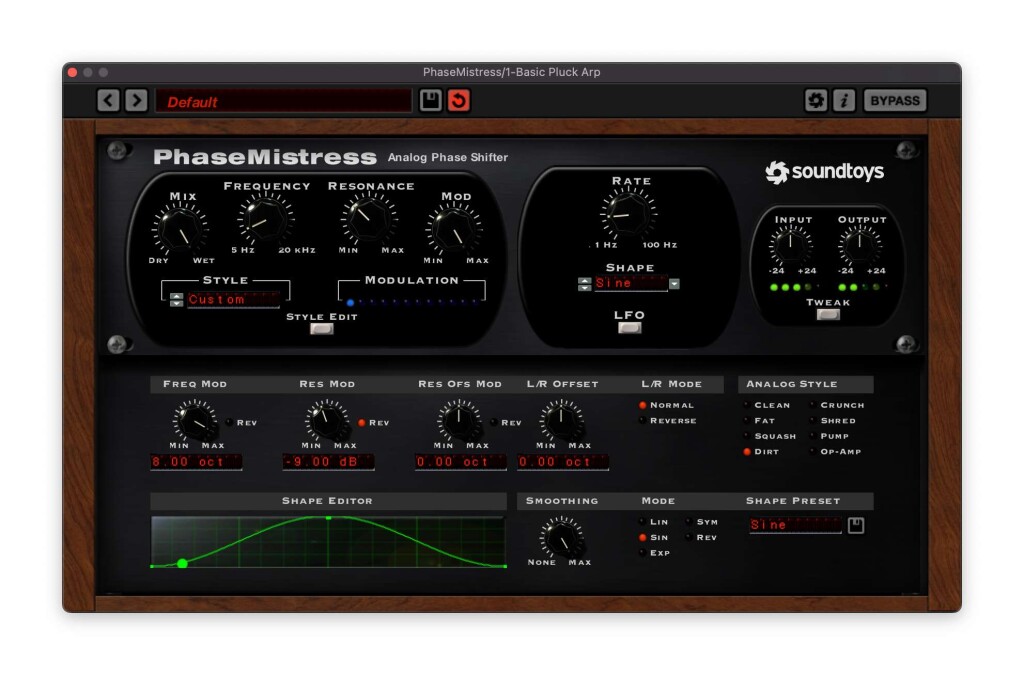
Rhythm mode gives you more complex musical/rhythmic patterns than LFOs alone, with its own editor and presets – you can tweak this one, too.
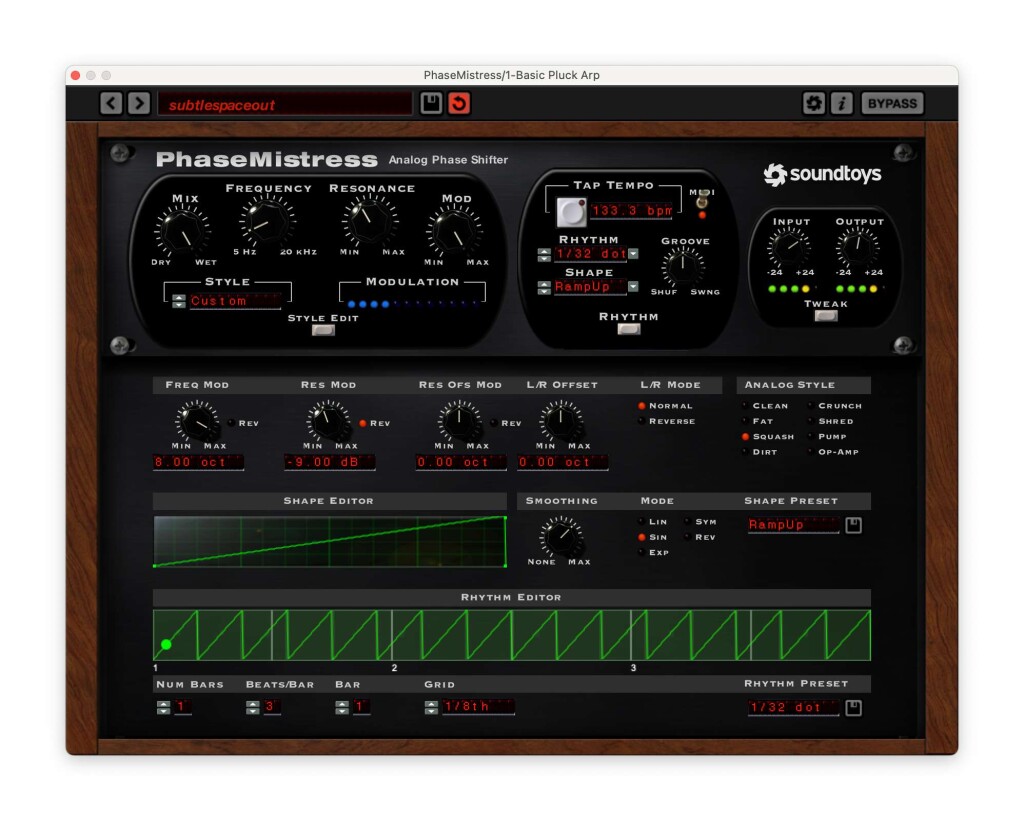
Envelope is an envelope follower, which winds up being one of my favorites. (See, again, a similar feature in SuperPlate.)
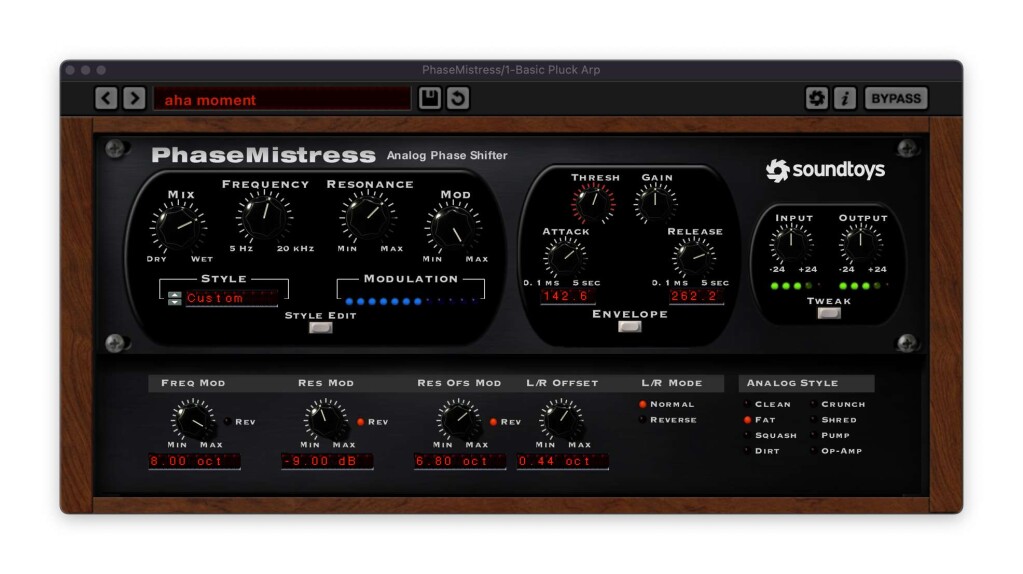
And note that several of these can be set to sync or not – with both an internal clock and external (the MIDI switch).
Tweak (on the far right) > Analog Style gives you other options: Clean, Fat (low-frequency distortion), Squash (with more compression), Dirt (broadband saturation), Crunch (high-end clipping), Shred (asymmetrical clipping), and Pump (compression).
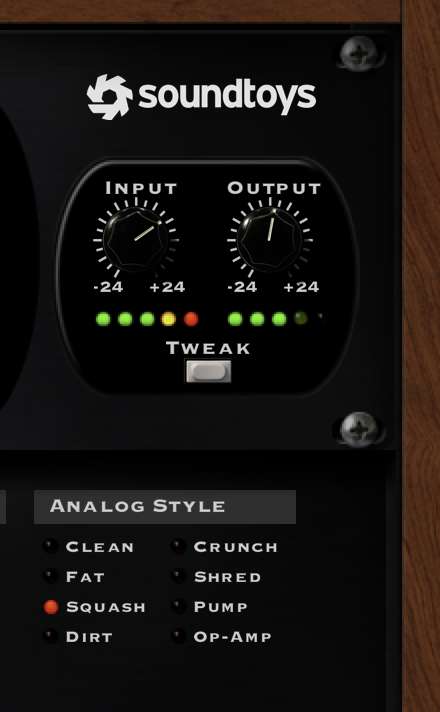
Adding analog dirt opens up PhaseMistress to a whole other dimension. You can really use phasing in combination with dirt to produce unique effects – or even think of this as a distortion effect with some phasing added in, if you prefer. See the two videos below.
CDM presets
I made some presets to show off some sweet spots I happen to like in this plug-in. You can download them at the link here for free and bring them into your installation alongside Soundtoys’ own set.
I kept input and output level, so these are clean by default. Here’s how they sound:
But as I said, you can think of the analog distortion/saturation as its own dimension – also true of other Soundtoys plug-ins. This stage can sound really, really good – especially on percussion. Since I gave this to you flat, you can adjust these to taste, like so:
I think this is why Soundtoys stuff tends to stick. There is a bunch of functionality that opens up over time.
Have at the presets; enjoy!
To install them, you can drag and drop them onto the plug-in, then save them in your user bank. (Click the preset name, then choose “save as…”)
Video resources
Want to watch more to get more advanced? There are a bunch of videos for using PhaseMistress, but I recommend starting with the Soundtoys ones for more tips. In a recommended watch order:
Oh and if you ‘ve got Effect Rack, here’s that vocal preset download:
Found other tips / got other questions? Let us know!
Previously: